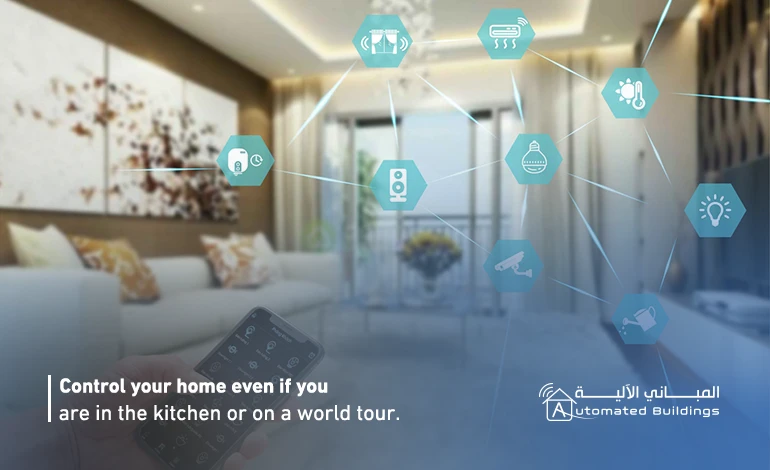Smart Home: Control your home even if you are in the kitchen or on a world tour.
There is no doubt that you have seen ads for light bulbs, smart door locks, and WIFI thermostats. These features help you to control your home from anywhere and every time. Therefore, it includes all household appliances.
What if you could open your garage door while you were driving down the street?
Do you know? You can connect all the security cameras by IoT, watch what happens in your home from the outside?
Smart home automation can do these jobs professionally. Skilled professionals can connect your home with IoT entirely. However, that is just a drop in the ocean. We are here to help you find the smart home suitable solutions.
Smart home:
A smart home is a service of the Internet of Things (IoT) services. Smart home systems and devices often work together and share consumer usage data. It automates devices according to the preferences of the homeowners.
It is a reliable system to operate all your devices readily. Also, it is a home depending on the Internet to connect all appliances. The Internet completely automates home to control, monitor, and manage systems and devices. Lighting and heating remotely are examples of an automated home. The smart home has exceeded all expectations with its simplicity and profession.
How smart home works:
Let us say you are relaxing downstairs after a hard day,
Do you want to make sure you have turned off your bedroom light in the evening?
Is it nice to do it with wireless control instead of having to go upstairs?
It is the closest description of how wireless home automation works.
Wireless home automation works by using low-power equipment. So, it can send and receive information, such as light sensors. Then, light sensors can detect the sunrise and send commands to open your bedroom curtains automatically.
These devices closely connect to the Internet of Things. Therefore, homeowners can reach data and send them commands through the Internet connection. X10 was the first industry standard for home automation. It helped devices connect through line wiring, radiofrequency, and protocols based on wireless networks. There are a variety of wireless protocols that developed to use them in a home automation environment, such as:
- network
- Bluetooth
- WIFI
- Zigbee protocol
Is home automation safe?
Pressing the button will make your life easier. However, there is no technology that is 100% guaranteed. There are efficient advantages of the smart home; despite that, it also has disadvantages. Many security risks will seize the opportunity to penetrate your privacy once you connect your home to the Internet. We will explain its advantages versus its risks, as well as helpful tips to keep your home safe.
Advantages:
- Provide a central control system that can access the whole different devices of your home through a single system. Usually, it controls everything from showers to your home safety net through one central system. The central control system distinguishes with its high quality and efficiency.
- Users can get notifications and updates of problems in their homes because all smart home systems pair to their mobiles.
- Sustainability is one of the biggest attractions of owning a smart home.
- Homeowners can use appliances and electronics more efficiently. Therefore, this saves costs and reduces energy.
Challenges:
Despite the smart home offers convenience and saves costs, there are some challenges such as:
- These systems require professional installation, which will increase the cost.
- These systems are very inclusive. If you choose to use a central system, you will find restrictions on using the devices that are connected to that system.
- There are fatal security errors that may infect these systems. These systems need a high degree of protection to prevent home security breaches.
Assuage those fears by following these security provisions to protect your smart home from any hacking:
- Protect smart devices with a strong password of random characters that don’t include personal information. Also, change it constantly and use the encryption feature.
- Use secured and separate Wi-Fi networks for IoT devices.
- Disable unneeded features which block as many multiple entry points as possible.
- Update devices regularly because updates often include basic security improvements which improve your network security.
- Embrace two-factor authentication to give extra security. Not only using passwords but also requiring additional proof of identity.
- Provide firewalls of network and smart devices.
The ball is in your court now; enjoy high levels of comfort and safety. Put your smart home key in your mobile phone and its security between your hands.




